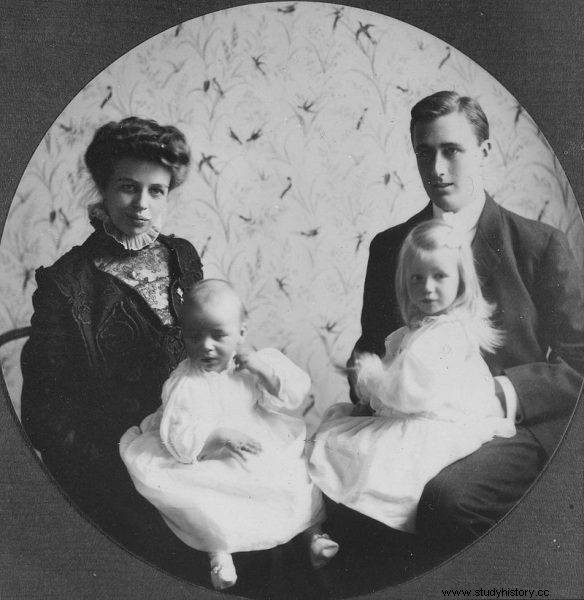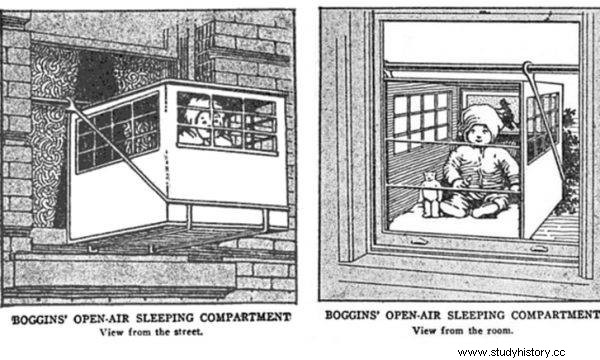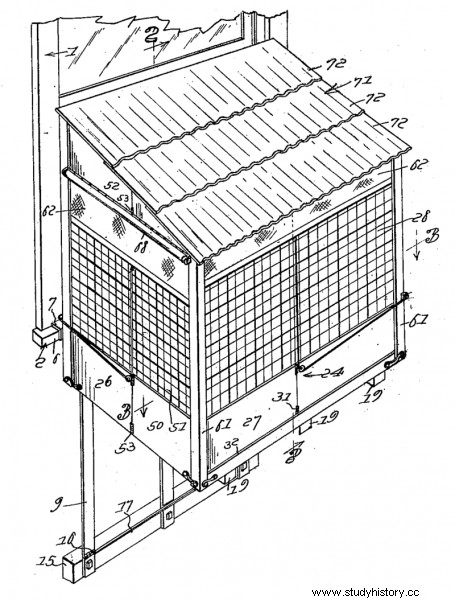How to improve the child's immunity and protect them against diseases? A hundred years ago, young mothers asked themselves this question, and scientists had a simple answer - from infancy, children should be "aired". And if you don't have a house with a garden or a park nearby, all you need is an open window and ... a cage behind it.
In 1913, The Times Dispatch of Richmond, Virginia, reported on a new invention that would relieve young mothers of the tiresome burden of watching their children play in the yard. As reported by a reporter, a certain Mrs. Robertowa C. Lafferty "does not have children of her own, but observing the difficulties faced by other women led her to create a baby" cradle of health " ”.
This cradle was in fact ... a wicker cage with dimensions of 60 × 60 × 75 centimeters, which, caring for the health and proper development of the toddler, and at the same time very busy with housework, should hang outside the window - and enjoy her free time.
To protect the child from insects, a mosquito net was installed inside, and a strong cover was to protect the child from rain, snow or ... hit by objects falling from higher floors. The journalist praised:
In crowded cities with a shortage of lawns and meadows, the baby cage will be extremely useful. In order to meet city regulations, it was constructed in such a way that it could be placed on a window sill. There is not the slightest risk that the cage with its valuable "inhabitant" will fall out, because it is securely attached to the window frame.
Fresh air is essential
However, Mrs. Lafferty's invention was by no means new. Already in the book The Care and Feeding of Chidren , published in 1884 Dr. Luther Emmett Holt recommended placing baby cradles or special wicker baskets for babies near open windows. As he argued:
Fresh air is essential to renewing and purifying the blood, and is just as important to a baby's health and development as adequate nutrition. This improves your appetite and digestion, and your cheeks turn red - you can see any signs of health.

Eleanor Roosevelt, the 21-year-old wife of future US President Franklin Delano Roosevelt, soon after the birth of her first child, daughter Anna, acquired a chicken cage
The advice itself was quite reasonable, but there were parents who took it a step further. Among them was Eleanor Roosevelt, the 21-year-old wife of the future US President Franklin Delano Roosevelt, who soon after the birth of her first child, daughter Anna, acquired a chicken cage and hung it outside her New York apartment window. What for? So that the girl can enjoy some fresh air during naps.
The "airing" of little Anna in a cage was curbed by a worried neighbor who notified social services about the unusual educational method used by Eleanor. The future first lady was shocked - she just considered herself a modern mother.

In the interwar period, it was recommended to keep babies in cages outside the window
As it turned out, it was not only modern, but also ahead of its time! Already a quarter of a century later, every self-respecting mother in London who was unlucky enough to have a house with a garden exposed her offspring to the fresh air in a cage, and the neighbors looked on approvingly!
Patent for health
The first commercial patent for a baby cage was filed in 1922 by Emma Read of Spokane, Washington, with the number 1,448,235. Her invention hung on the outer frame of the window, and the author assured that it was a completely safe solution.
At the same time, cages began to make a dizzying career overseas. In large cities of Great Britain, home gardens were a scarce commodity, so the English fell in love with the idea of providing children with fresh air in other ways.

The first commercial patent for a baby cage was filed in 1922 by Emma Read
In the 1930s, "airing out" became so popular that neighborhood associations such as the Chelsea Baby Club were giving out children's cages for free to members who did not have their own piece of greenery. Ba, in 1935 the Royal Institute of British Architects recognized the so-called . balcons pour bébés (children's balconies, as the cages were poetically named) as an essential element of every apartment for middle class people!
The cages disappeared from London streets during World War II, when the Luftwaffe bombed the city again and again, but returned in style in the 1950s - though not for long. With the growing popularity of passenger cars and increasing car traffic, they were gradually abandoned - the air above the jammed road could hardly be called fresh. Moreover, there were voices questioning the safety of such a solution.
Today, no one recommends placing babies in cages hanging outside the window a few or a dozen meters above the ground, although the advice of Dr. Luther Emmett Holt remains at a premium. That is why today's parents are left with nothing else but to go for an "old-fashioned" walk with their children.
Bibliography:
- Phil Edwards, The bold and beautiful baby cage , Vox (access:19/09/2021).
- Put Your Baby in a Bird-Cage , The Times Dispatch, September 14, 1913 (accessed September 19, 2021).
- Eleanor Roosevelt, The Autobiography of Eleanor Roosevelt , Da Capo Press 1992.
- The bizarre history of the baby cage, 1934-1948 , Rare Historical Photos (access:19/09/2021).
